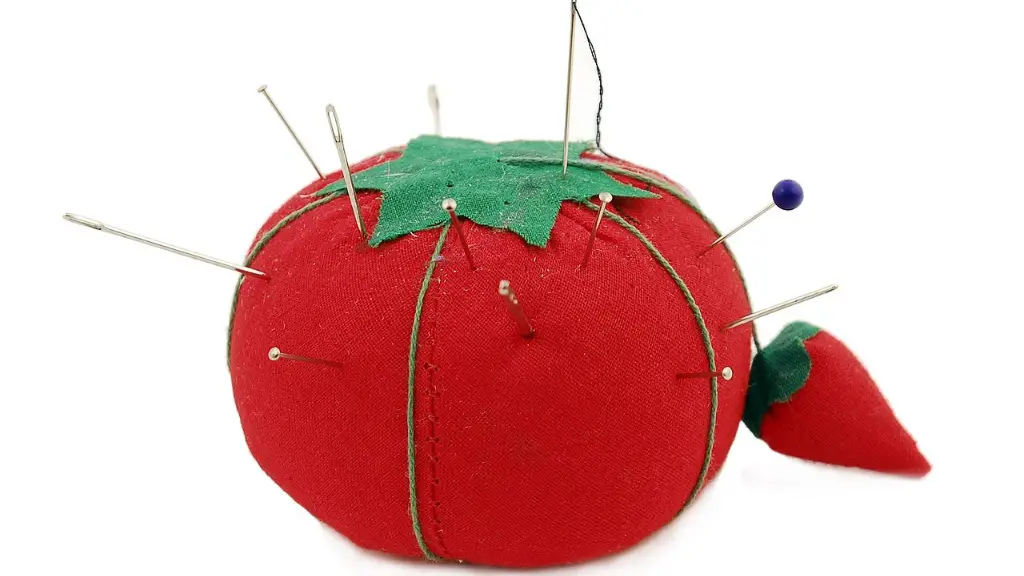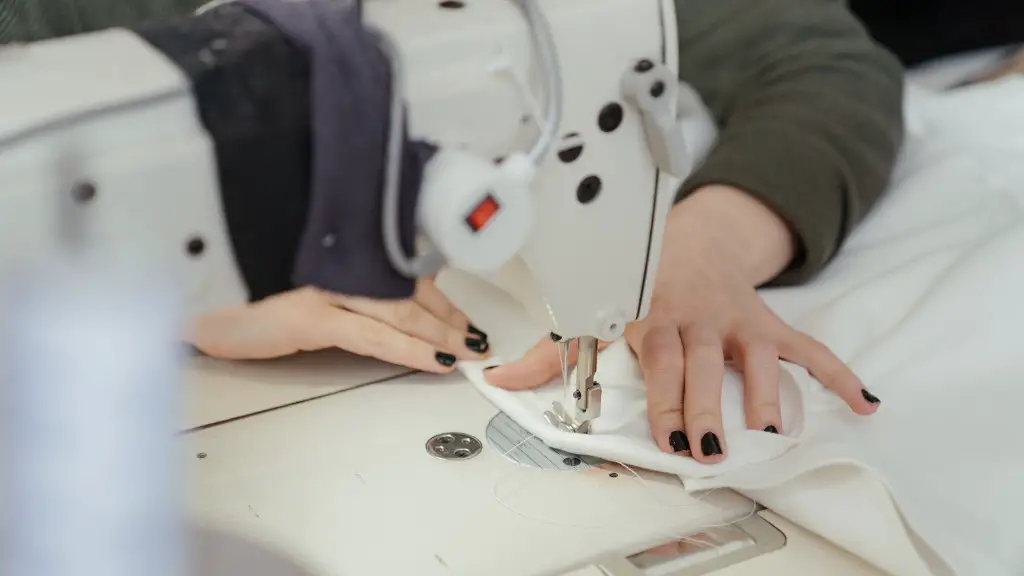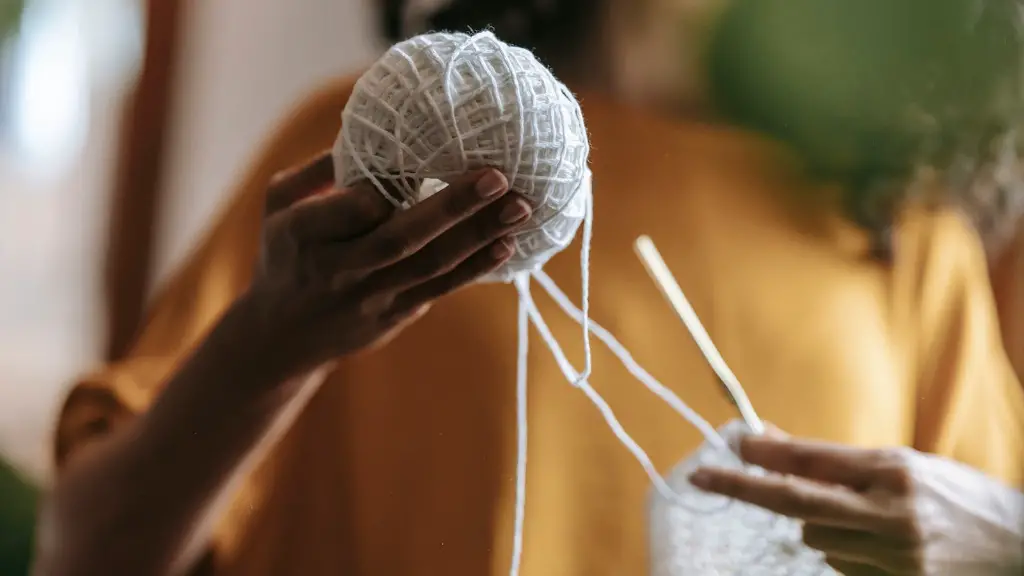Introduction
Sewing machines have been around for centuries and have been helping people to tailor and mend clothes for a long time. Despite their age, many modern machines are still very versatile, capable of performing basic as well as more complex or intricate tasks. The key to getting the best out of a sewing machine is to understand how to set the tension, something that can take a bit of trial and error.
Thread Quality and Tension
When setting the tension on a sewing machine, the type and quality of the thread being used is an important factor to consider. A high quality thread is going to be easier to work with and will provide better results overall. It is important to ensure the thread is able to pass freely through the tension discs of the sewing machine and not fray or become tangled. When adjusting the tension discs, expert sewers suggest that the lower number should be increased, while the higher number should be reduced for a better tension balance.
Needle Type
The type of needle used on a sewing machine can also have a large impact on the tension settings. Sewing needles are designed with specific tasks in mind, such as stitching thick or thin fabrics, and different needles will require different tension settings. Using the wrong type of needle for a specific task can result in the wrong tension settings being applied to the fabric, creating problems with the stitching or causing the material to be misaligned.
Balance vs. Tension Test
In order to ensure the tension settings are correct, experts recommend performing a balance test as well as a tension test. For the balance test, two pieces of fabric are stitched together and then cut in half. If the two halves perfectly match, then the sewing machine is sufficiently balanced. For the tension test, several stitches are made on a scrap piece of fabric and the thread is then pulled gently. If the fabric holes line up correctly and the thread pulls away easily, then the tension is correct.
Bobbin Thread
When setting the tension on a sewing machine, it is also important to make sure the bobbin thread is correctly wound. This can sometimes be tricky, as it must be wound with the correct tension and at the correct speed. If the bobbin is too tight, then the fabric may not feed correctly, resulting in misaligned stitches. Conversely, if the bobbin is too loose, then the stitches may not be tight enough.
Jammed Threads
Sometimes, the thread may become jammed and appear to be stuck as it passes through the tension discs. In this situation, it is important to make sure the thread is correctly positioned in the tension discs and that both top and bottom threads are adjusted correctly. If a thread is tangled, then the tension discs may need to be adjusted to reduce the pressure, allowing the thread to pass through more easily.
Finishing Touches
Once the tension has been set, experts recommend performing another test stitch to make sure everything is in order. This involves making a small sample stitch on a scrap piece of fabric to ensure the tension is balanced, the needle is suitable for the fabric, and that the fabric is feeding correctly. If the results of the test sample stitch are satisfactory, then it should be possible to move onto sewing the intended project without any problems.
Presser Foot Pressure
When setting the tension adjustment on a sewing machine, it is important to consider the presser foot pressure. Too much pressure from the presser foot can cause the fabrics to jam or the stitching to be misaligned. In order to avoid this, the presser foot should be adjusted until it is producing just the right amount of pressure for the fabric being used.
Lubricating the Machine
With regular use, the inner surfaces of a sewing machine can become dry and clogged with thread or dust. This can affect the tension settings as the thread may not pass freely through the tension discs or become tangled. In order to ensure smooth operation, it is important to lubricate the inner surfaces of the machine on a regular basis. This can prevent the build-up of dust and debris and keeps the tension settings at the right level.
Thread Tension Knob
One of the most important components of a sewing machine is the thread tension knob. This knob helps to control the pressure of the thread being passed through the machine. Most sewing machines will have a numbered tension dial that can be adjusted to create the correct thread tension balance. It is important to pay attention to the tension settings as too much tension can damage both the fabric and the sewing machine itself.
Troubleshooting Tips
When experiencing difficulty setting the tension on a sewing machine, it is important to remember a few essential troubleshooting tips. It can often be helpful to re-adjust the thread tension knob and retest the thread with a tension test. It may also be worth exploring the threads that are available to make sure the thread quality is suitable for the task. If the tension is still misaligned, then it is time to contact the manufacturer for further advice and instructions.
Cleaning the Machine
An important part of caring for a sewing machine is to keep it clean. This means not just cleaning up any accumulated dust and debris on the outside, but also routinely removing and cleaning the lint collector if the machine has one. This helps to ensure the tension settings are kept at the right levels and that any potential problems are identified and resolved early in order to avoid any further issues arising.
Check the Needle Size
The size of the sewing machine needle is a critical factor when setting the tension. Sewing with the wrong size needle can increase the tension on the thread, causing the material to be misaligned and the stitching to be uneven. It is important to ensure the needle is the correct size and shape for the fabric being worked on and to regularly check the needle for any signs of damage or wear over time.
Adjustment of Thread Delivery System
Another key factor in setting the tension on a sewing machine is the adjustment of the thread delivery system. This is sometimes referred to as the “pull off” knob and is typically located on the side of the machine. This knob adjusts the tension on the thread as it passes through the machine and can greatly affect the tension settings as a whole. Adjusting this knob to the correct setting will ensure the tension is set correctly and will give better results overall.
Final Thoughts
Understanding how to set the tension on a sewing machine is essential in order to make sure the fabrics are correctly aligned and the stitching looks neat and professional. By keeping an eye on the thread quality, adjusting the presser foot pressure, and making sure the right type of needle is being used, it should be possible to get the best possible results from the sewing machine. Furthermore, regular maintenance and cleaning of the machine will help to keep it in top condition and ensure the tension settings stay balanced and accurate.



